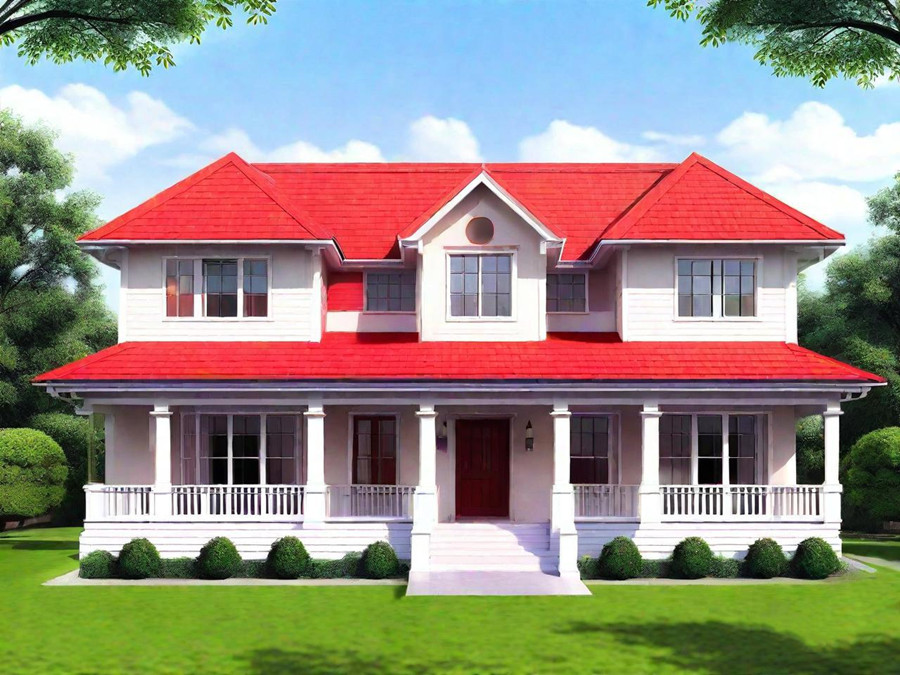In areas prone to natural disasters, a building's earthquake resistance is crucial. Light steel villas, with their unique design and material characteristics, can effectively withstand earthquakes of up to magnitude 9, making them increasingly popular in modern construction. This article explores why light steel villas possess such outstanding earthquake resistance and the scientific principles behind it.

Characteristics of Light Steel Structures
Light steel villas primarily use high-strength light steel materials, which achieve a good balance between strength and weight. Compared to traditional concrete or masonry structures, light steel structures are lighter, reducing the overall center of gravity and the inertial forces during an earthquake. This characteristic allows light steel villas to better cope with the impacts of ground movement during seismic events.
1. High Strength and Ductility
Light steel materials exhibit high strength and ductility, enabling them to deform without breaking under external forces. Even during severe earthquakes, light steel structures can maintain their integrity. This ductility allows buildings to effectively absorb and dissipate seismic energy, preventing structural failure.
2. Superior Seismic Design
The design of light steel villas typically adheres to modern seismic design standards. In constructing these buildings, architects consider the layout of the center of gravity, the configuration of support systems, and the design of connection joints. These design elements not only enhance the stability of the building but also ensure overall coherence under seismic forces, reducing sway and tilt.
Dynamic Response and Energy Absorption
The dynamic response of light steel villas during an earthquake is crucial. Due to the elasticity and ductility of light steel materials, these structures can effectively absorb seismic wave energy. When seismic waves reach the building, the light steel structure vibrates accordingly, but this vibration can be quickly absorbed and dissipated, minimizing damage to the structure.
1. Lightweight Structure
The lightweight nature of light steel villas means they experience relatively smaller forces during an earthquake. Traditional heavy structures may suffer severe damage due to excessive inertia, whereas light steel structures, being lighter, are subjected to smaller seismic forces, thereby improving their earthquake resistance.
2. Adjustable Support Systems
Many light steel villas utilize adjustable support systems that can be tailored to different earthquake magnitudes and directions. This flexibility allows the building to maintain optimal earthquake resistance under varying seismic conditions.
Advantages of Construction and Materials
The construction process of light steel villas is generally simpler and quicker. This characteristic not only enhances the efficiency of the building process but also reduces potential risks during construction. Modern light steel villas often use factory-prefabricated components that can be quickly assembled on-site, ensuring construction quality and stability.
1. Sustainability of Materials
The recyclability of light steel materials is another reason for their popularity. Compared to traditional building materials, the eco-friendly attributes of light steel align well with modern sustainable development ideals. Additionally, light steel villas have a longer lifespan, which reduces resource consumption.
2. Flexible Design Space
Light steel structures allow for greater design flexibility, enabling architects to customize different layouts and styles based on client needs. This flexibility is equally important in seismic design, as adjustments can be made according to real conditions to maximize safety.
Conclusion
Light steel villas, with their high strength, lightweight nature, ductility, and excellent design, can effectively resist earthquakes of up to magnitude 9. This modern building form not only meets safety requirements but also aligns with sustainable development principles. As building technology continues to advance, light steel villas are poised to play an increasingly important role in earthquake-resistant construction, providing people with safe and comfortable living environments.